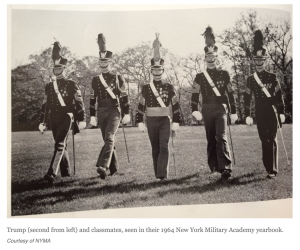VIRGINIA’S DILEMMA
Two major Virginia natural resource action proposals received national attention in recent years: offshore oil and gas drilling, and a proposal for uranium mining. Both initiatives involved resource and policy issues of large magnitude. Both were objects of detailed reports by Virginia’s legislature. Each became controversial and sank out of sight without the Virginia general public really understanding the issues.
This report takes a detailed look at the uranium mining issue. Regardless of whether one starts with a negative or positive attitude toward uranium mining, the recent events showed that Virginia’s current political structure is incapable of providing credible professional assessment, useful public information, or coordinated management of major natural resource recovery operations. A key reason is that the state government structure is not designed to deal with significant but sensitive resource issues. Even with positive intent, politicization of the existing system fails to provide responsive and independent evaluation and oversight that could gain wide public trust.
Virginia could improve a condition that is frustrating to both environmentally concerned people as well as officials and enterprises concerned with developing Virginia’s natural resources. Suggested first steps offered in this report would involve structural reform of the office of the Virginia Secretary of Natural Resources, with emphasis on gaining operational independence and integrity for the office. No laws, regulations, or technical procedures can substitute for the latter.
URANIUM MINING DEVELOPMENTS, 2007-2012
Summary
In 2007 interest in lifting a 30-year-old moratorium on mining uranium in Virginia arose. The stakes were big. The Coles Hill area in south-central Virginia has the largest undeveloped uranium deposits in the nation. It could supply a significant proportion of the uranium needed for the U.S. nuclear energy industry – 92% of which is now imported. But a final report delivered by the Governor’s Uranium Working Group in 2012 only increased mounting opposition to mining. It became clear that Virginia’s system for handling natural resource initiatives associated with environmental sensitivities was inadequate. A legislative proposal to remove the 30-year-old moratorium on uranium mining was withdrawn.
Uranium mining ran into trouble because 1) the responsibility to advise on action was given to elected politicians and their appointees who, without prejudice to their efforts, lacked relevant professional expertise and ability to render independent judgment; 2) the advisory reports offered voluminous detail on potential operations and problems but left practical questions and issues of prime concern to the public and environmental groups unresolved. This paper respectfully recommends to Governor-elect McAuliffe that he initiate bipartisan exploration of fundamental changes that could promote citizen confidence in and more effective management of Virginia’s natural resources, not limited to uranium.
The key recommendation is that the current office of Secretary of Natural Resources be transformed from a position appointed by and answering to the Governor to an independent professional office. It would have responsibilities and missions decided by the legislature and governor but be insulated from outside pressures in performing scientific evaluations and other functions by having civil service status. It should be authorized to recommend and initiate cooperative agreements with federal science and technology agencies where this would serve Virginia interests.
Virginia’s uranium resources
The Coles Hill area in Pittsylvania County holds the largest undeveloped uranium deposit in the U.S., with approximately 120 million pounds of estimated reserves having a gross value of around $6 billion at current uranium oxide (U3O8) prices (~$50/lb.). The U.S. may be the only advanced nation in the world that would allow such a large resource to stay under moratorium for 30 years while the nation imports 92% of uranium needed by its nuclear power industry. A breakthrough in mining operations and oversight achieved in such a way as to gain public confidence would also help lift the existing depressed state of mining in the United States – a desirable and necessary activity for a nation like the U.S. Advanced mining and associated technologies have important spinoff benefits for handling waste materials, cleanup of brownfields, and other activities leadership in which has moved abroad.
In 2007 exploration at Coles Hill resumed under license from the Virginia Dept. of Mines, Minerals, and Energy. Local owners formed Virginia Uranium, Inc. in cooperation with a Canadian mining company. The Uranium Subcommittee of the Virginia Legislature’s Commission on Coal and Energy requested a report from the National Academy of Science and explored lifting the moratorium.
Environmental concerns
Uranium has a low level of radioactivity. For short exposure, it has about the same toxicity as lead. The main concern lies in solid radioactive daughter products, primarily radium (226Ra) and radium’s gaseous decay product, radon (222Rn) that build up over time in tailings deposits and associated pore waters. These radionuclides are alpha emitters that are hazardous (cancer risk) if breathed or ingested.
The Town of Virginia Beach gets water supplies from reservoirs that could be affected by radioactive daughter products of uranium, should there be leakage from mine tailings disposal sites (see location map). The Town commissioned or otherwise received a series of reports that provide an overview of uranium mining and regional data for Virginia. These reports include slide shows providing useful background for the general public.
For a map showing previous uranium leases in the Coles Hill area and waterways in south central – western Virginia and northern North Carolina, see the website from Town of Virginia Beach online documents: http://www.vbgov.com/government/departments/public-utilities/pages/uranium-mining.aspx
The Governor and the Virginia legislature’s actions
The legislature earlier created a Uranium Subcommittee of the Commission on Coal and Energy. The subcommittee requested a report from the National Academy of Sciences, which was published in 2011, along with a consulting expert’s report. On January 18, 2012, Governor Robert McDonnell appointed an additional Uranium Working Group made up of staff of the Departments of Public Health, Mines, Minerals, and Energy, and Environmental Quality, three of the six agencies under the Secretary of Natural Resources, and citizens. The UWG was authorized to get outside assistance for its report, and two RFPs were released.
The two Virginia working groups chose consultant groups that included individuals familiar with Canadian uranium mining and regulatory procedures. Advisory group members visited Saskatchewan uranium mining areas to get hands–on exposure to mining, waste disposal, hazard, and other issues. The final report of the UWG produced a large amount of background research in a short time. Consultant reports included state and U.S. federal regulatory systems and policies in considerable detail. The 345‐page National Academy of Sciences report confirmed the commercial viability of the Coles Hill deposits and provided an exhaustive overview of radioactivity–related and other potential problems associated with mining. But it did not get into operational or organizational detail applied to the Virginia case.
Outcomes
The state advisory bodies’ reports contained voluminous data. However, groups and people continued to join opposition led by the Piedmont Environmental Council, the Virginia chapter of the Sierra Club, and the Southern Environmental Law Center. That things were not going well was brought home by the fact that Governor McDonald’s election partner, Lieutenant Governor Bill Bolling, and business groups also registered opposition to lifting the moratorium. Ultimately, Senator John Watkins, a Vice Chair of the Uranium Subcommittee and initiator of a proposal that would have lifted the moratorium, withdrew it.
Virginia is left with the 30 year–old moratorium that says, in effect: We are scared of uranium. We don’t trust our state system to evaluate proposals that involve hazards. We prefer to shut everything down until a new law details procedures to manage uranium mining safely.
WHAT’S WRONG WITH THE CURRENT SYSTEM?
The Dept. of Mines, Minerals, and Energy licenses traditional mining and other natural resource activities. It does so in cooperation with other agencies under the Secretary of Natural Resources. However, large, controversial initiatives such as offshore drilling and the uranium mining proposal have been handled by legislative committees and commissions, supplemented by advisory bodies appointed by the Governor.
Advisory bodies were asked to provide policy guidance for the General Assembly. The Uranium Working Group said that detailed regulations would have to be developed by the Departments of Mines, Minerals, and Energy (DMME), and Environmental Quality. As mentioned previously, the Subcommittee on Uranium obtained a study by the National Academy of Science on the uranium mining issue. But the report did not provide practical guidance on the questions facing Virginia. Nor would recommendations of the Uranium Working Group – had been allowed and willing to make them – have gained public trust.
A major problem was that the advisory bodies were composed of elected political officials, their appointees, and state employees from agencies whose leaders serve at the pleasure of the governor. They lacked formal expertise or experience with the complex problems involved in mining uranium. To their credit, they showed discretion in the choice of consultants and labored diligently, but the whole process was moribund from the beginning. It had no chance to gain public confidence.
The advisory bodies’ “start from scratch” approach was unrealistic and left priority questions unresolved.
The advisory groups were not authorized to make definitive recommendations about mining. What the reports delivered was an array of complex background data, descriptions of potential hazards, state and federal permitting, and regulatory procedures. They offered no pathway for action by the General Assembly. The provision in the existing moratorium that a new law prescribing regulatory guidelines would be needed prior to the initiation of mining was also left to future resolution. An earlier draft bill was left untouched. There was an air of unreality about state advisory bodies embarking on a “start-from” scratch address to the mining of a commodity for which the federal government and private industry had a sixty-year operational and regulatory history.
The capabilities of the operating company were not established
A prime concern is the disposal of uranium‐enriched tailings under Virginia’s conditions of rainfall, groundwater, and occasional floods. This contrasts with the arid western environments of mining areas. One might have expected Virginia Uranium Inc. to list its expertise and describe approaches for dealing with uranium in Virginia’s unconventional setting. But the company merely cited the state advisory documents and indicated that it would develop operating strategies in the future. [http://www.virginiauranium.com/]. Since the company provided no technical detail advisory group consultants had to use hypothetical operational procedures for predictive models.
Failure to consider public reception of the reports
The public is not equipped to interpret detail about uranium mining, hazards, legal and regulatory procedures, or reports of hearings in documents like those in the thousands of pages in the UWG report and cited references. It and especially environmental organizations predictably gave little credence to plans that failed to provide information on state management systems, lines of authority, and the professional competence to oversee mining in Virginia’s environment, should it take place.
POTENTIAL REFORMS OF VIRGINIA’S SYSTEM
[updated since original message, March 4, 2023]
That Virginia’s current system is not equipped to consider potential uranium mining was decisively demonstrated. Hypothetically, an effective state natural resource agency would have had the professional skills and public trust to seek assistance from relevant federal agencies like the U.S. Geological Survey and the Department of Energy and work out cooperative agreements to evaluate potentials. Realistically, however, starting new uranium mines under current conditions in the U.S. would be challenging under ideal circumstances. The public has a special sensitivity to concerns involving radioactivity and powerful environmental NGOs like the Sierra Club and the National Resources Defense Council oppose nuclear energy. They would mobilize members and formidable legal resources to vigorously oppose any mining of uranium.
However, the current administrative and legal framework in which the Office of Natural Resources operates is not well suited to deal with any major initiatives with controversial elements, because it is linked to partisan politics. The town of Virginia Beach offered more intelligible and useful background data and summaries of the pros and cons of uranium mining than did the state of Virginia and its agencies.
An impartial, scientifically and professionally qualified oversight system for natural resource issues has major potential for Virginia. To recruit and retain agency leaders with competence, experience, and integrity, who can exercise scientific and operational judgment freed from external pressures, the office of Secretary of Natural Resources needs independent civil service status. Gaining stable operational status across political administrations, the office would be better equipped to make assessments, explain and justify balanced policies, make positive recommendations, and deal forthrightly with legitimate concerns or exaggerated claims.
The newly-organized agency should not share in revenues from activities that it oversees in order to avoid conflict of interest. But it should be able to seek funding for research, cooperation, and supporting activities from federal sources. Where issues beyond state expertise are involved, the agency should be able to seek assistance from federal agencies and cooperate with other states. Beyond technical qualifications, the agency head would need balance and integrity. Persons with such qualities need to be sought and properly remunerated. Virginia should be attractive to qualifying individuals.
People will ask: could we really trust an independent agency? The answer is yes. Prior to the major federal environmental laws of the 1970s, states including Texas (Texas Railroad Commission), Kansas (Kansas Geological Survey), and Illinois and Wisconsin environmental protection agencies exercised effective and respected oversight over natural resource and environmental activities. This would not have been possible had their leadership changed with political administrations.
. Final conclusions
Virginia is a state with a tradition of effective management except in the case of major natural resource projects. The governor, given the current narrow balance between political parties, has the opportunity and incentives to set in motion planning for a modernized natural resource management structure. A competent system that inspires trust could help inform and guide proposers or framers of new or modified legislation. It would help the state evaluate and make proactive and prudent decisions about future activities and operations, moving them from outcomes determined by lobbying or defeat through opposition campaigns to open analysis and consensual decision-making. Success in achieving such goals could make Virginian laboratory for leadership at a time of paralysis and gridlock in environmental and resource policy.
SELECTED REFERENCES
Christopher, Peter A., Geological and Engineering Consultant: Technical Report on the Coles Hill Uranium Deposits, http://www.imcc.isa.us/ColesHillUranium.pdf
Home page, Virginia Uranium Mining, Inc., http://www.virginiauranium.com/
“Summary of concerns by the Southern Environmental Law Center”, taken from the report of the National Academy of Science, Uranium Mining In Virginia (2012):http://www.southernenvironment.org/uploads/fck/file/uranium/summary_key_findings_NAS_report.pdf
Town of Virginia Beach. Uranium Mining Impact Study, 2011. http://www.vbgov.com/government/departments/public-utilities/pages/uranium-mining.aspx; Includes an appendix of 16 relevant studies Report of the Uranium Working Group, Commonwealth Of Virginia, 2012, http://www.uwg.vi.virginia.gov/pdf/UWG%20Report%20-%20FINAL%2030Nov2012.pdf



